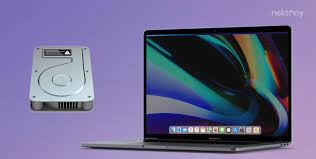Are you struggling to format your external hard drive for your Mac? Don’t worry, we’ve got you covered!
In this article, we’ll guide you through the process step by step, making it easier than ever to get your external hard drive up and running. Whether you’re a tech novice or a seasoned pro, we’ll walk you through choosing the right file system, backing up your data, and formatting your drive with ease.
Let’s dive in and get started!
Choosing the Right File System
When choosing the right file system for your external hard drive, it’s important to consider compatibility with your Mac operating system.
The most common file system options for Mac are HFS+ and APFS. HFS+ is the older file system and is compatible with all versions of Mac OS X. It offers good performance and supports file and folder permissions.
However, if you are using macOS High Sierra or later, it is recommended to use APFS. APFS is the new default file system for macOS and offers improved performance, security, and reliability. It is specifically designed for solid-state drives (SSDs) and supports features like snapshots, encryption, and space sharing.
Before formatting your external hard drive, make sure to backup all important data as the formatting process will erase everything.
Backing Up Your Data
To ensure you don’t lose any important files, make sure you regularly back up your data.
Backing up your data is crucial in case of any unforeseen events, such as hardware failure, accidental deletion, or even theft. By creating regular backups, you can easily restore your files and continue working without any major disruptions.
There are several methods you can use to back up your data, including cloud storage services, external hard drives, or network-attached storage devices. Choose the method that suits your needs and preferences best.
It’s important to establish a routine and make backing up your data a regular habit. Set reminders or use automated backup software to make the process even easier.
Formatting the External Hard Drive
Ensure you have enough free space on your external hard drive before proceeding with the formatting process.
To format your external hard drive on your Mac, follow these simple steps.
First, connect your external hard drive to your Mac using the appropriate cable.
Next, open the ‘Disk Utility’ application from your ‘Applications’ folder.
Once opened, locate your external hard drive in the left-hand sidebar of the Disk Utility window.
Select it and click on the ‘Erase’ tab.
From here, choose the desired format for your hard drive, such as ‘Mac OS Extended (Journaled)’ or ‘APFS.’
Finally, click the ‘Erase’ button to begin the formatting process.
Configuring Disk Utility Settings
You can easily configure your Disk Utility settings on your Mac.
Open the Disk Utility application by clicking on the magnifying glass icon in the top right corner of your screen and typing ‘Disk Utility’ into the search bar.
Once the application opens, you will see a list of all the drives connected to your Mac. Select the drive you want to configure from the left-hand sidebar.
Then, click on the ‘Erase’ tab at the top of the window. Here, you can choose the format for your drive, such as APFS or Mac OS Extended (Journaled).
You can also give your drive a new name by typing it in the ‘Name’ field.
Troubleshooting Common Issues
If your disk is not appearing in Disk Utility, try disconnecting and then reconnecting it to your computer. Sometimes, a simple disconnection and reconnection can resolve the issue. Make sure to unplug the USB cable from both ends and wait for a few seconds before plugging it back in.
Once you reconnect the disk, check if it shows up in Disk Utility. If it still doesn’t appear, you can try restarting your computer and then reconnecting the disk. Restarting can help refresh the system and detect the disk properly.
Additionally, make sure that the disk is properly powered on and connected securely. If these steps don’t work, there might be a more complex issue at hand, and you might need to seek further assistance.
Conclusion
In conclusion, formatting an external hard drive for your Mac is a straightforward process that ensures compatibility and optimal performance. By choosing the right file system and backing up your data, you can protect your files and prevent any data loss.
With the help of Disk Utility settings, you can easily format and configure your external hard drive. If you encounter any issues, troubleshooting common problems will help you resolve them quickly.
So, go ahead and format your external hard drive to make it Mac-ready!


